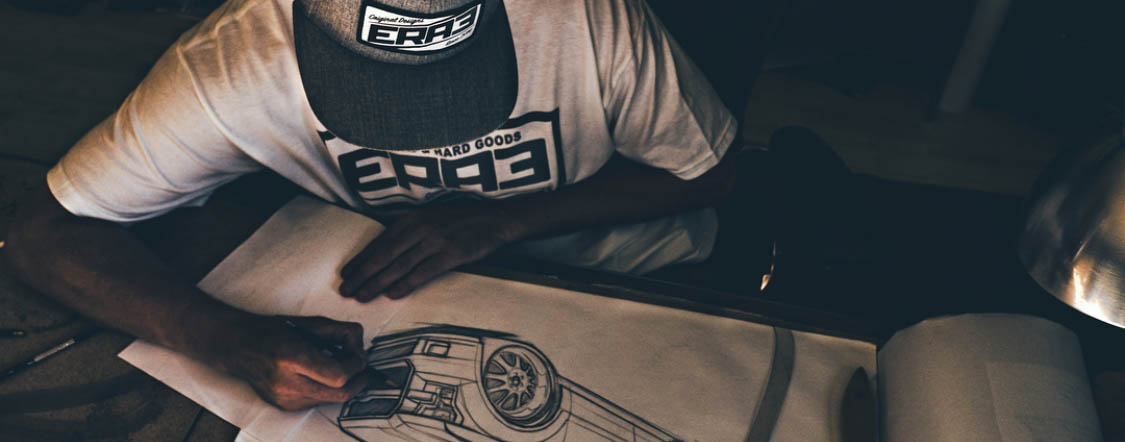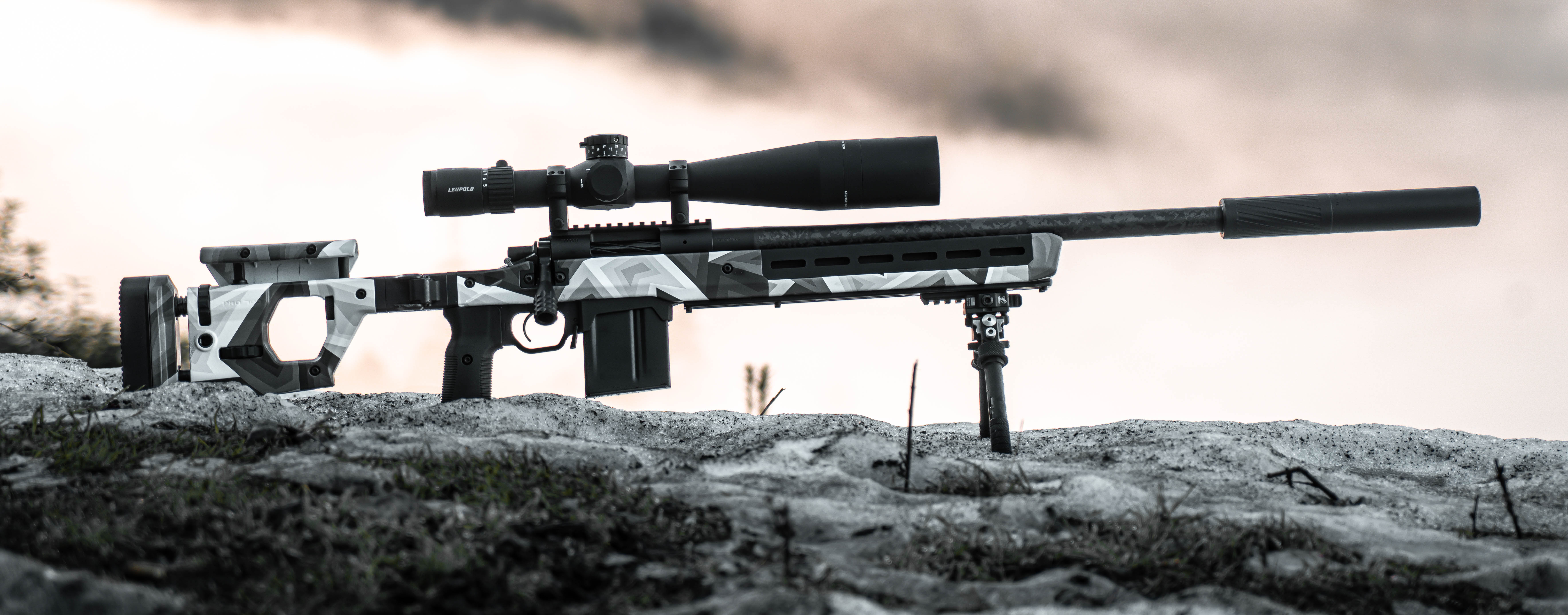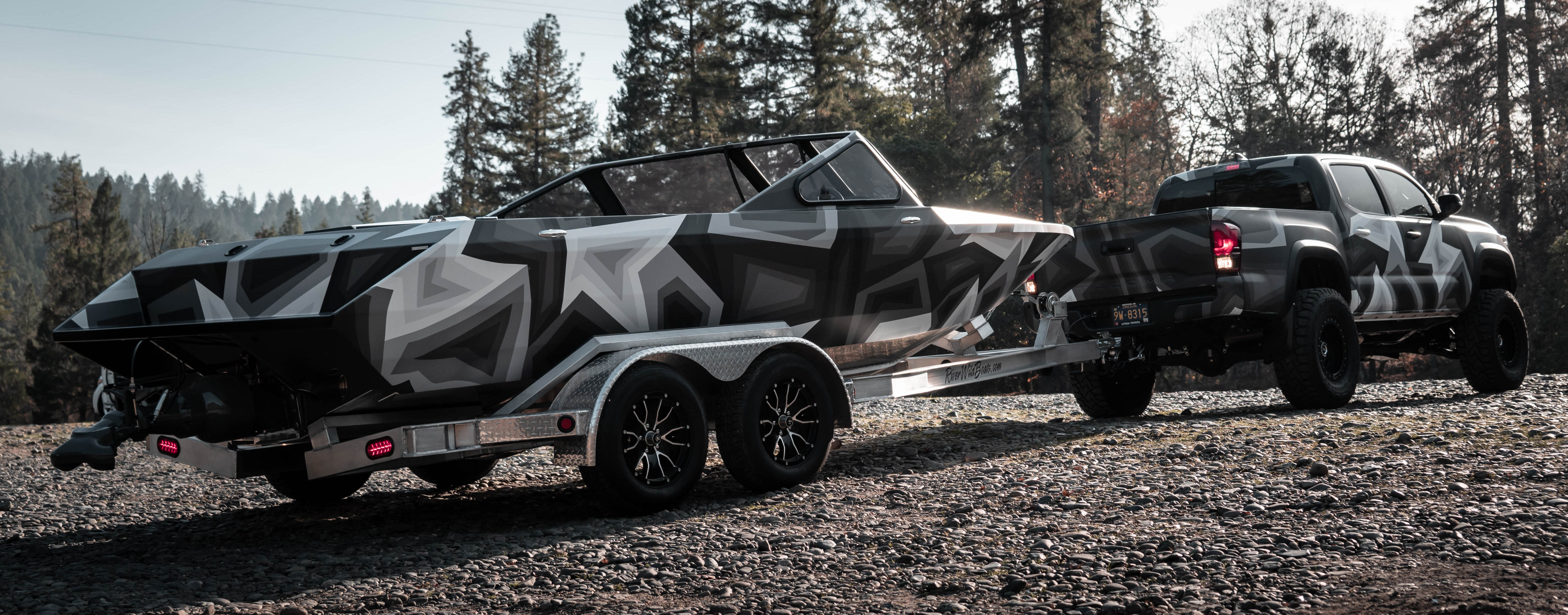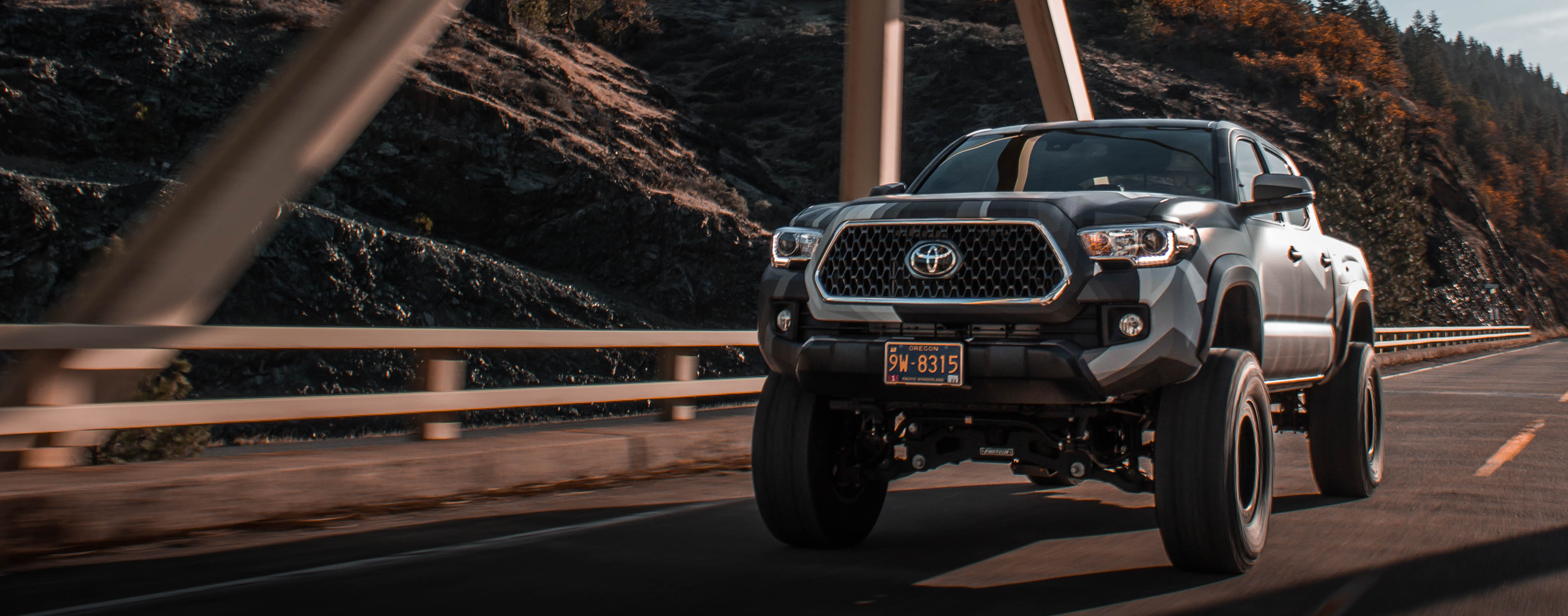ERA3: Renegades of The PNW Area Complex
A lot of people call what ERA3 does “hot rodding,” as the aftermarket firearms company puts their own one-of-a-kind spin on weapons and accessories creating gear that looks, feels and functions like nothing else on Earth.
It makes sense then, that ERA3’s lead designer Jason Hulst comes from the world of hot rodding. Born to a father who cut his teeth in the legendary era of 1940s, 50s and 60s Southern California street car hot rodding and eventually owning his own car customization and hot rod company (alongside his old man) in Grants Pass, Oregon, designing and building cool shit is in Hulst’s DNA.
So when ERA3’s founders Sterling Becklin and Sheri Johnson tapped Hulst to come on board as their lead designer and third partner, the relationship made perfect sense.
Give me some background about you and how you got involved with ERA3?
My background is in design. I have a graphic design degree from Oregon State. After that, I moved to California and got a transportation degree from ArtCenter College of Design in Pasadena in ‘96. From there, I worked at Disney corporate doing vehicle designs, then onto their Burbank studios where I did television animation for probably a decade.

When you say “vehicle design,” you mean like merchandise for toys and such?
No. Theme park ride vehicles. So I was there for about a decade and then I moved back to Oregon in 2005. From there, I started a hot rod and custom restoration shop with my dad, who is a product of the fifties hot rod generation. Did that in Oregon for probably ten years or so. Built a lot of vehicles for Ford Motor Company. Did some projects for Shelby American. High-end custom hot rod work. And, on the side, still doing freelance design work for Disney, design work for automotive aftermarket companies, doing a lot of t-shirt designs for various people.
Sterling approached me in 2012 or 2013, somewhere around there. He was looking for somebody to do some design work for a project he had going on for a t-shirt and one of the guys he ran into here in town said, “Hey, I got this guy that I know of that can do that stuff.” So he hooked (Sterling) up with me and I did a design for him and, you know, we went our separate ways. We kept in communication for maybe six months to a year and then one day, he showed up at my shop and said, “Hey dude, I want to talk to you about designing some stuff for this company I’m gonna start.”
He explained it was ERA3, how it was going to be gun-centric, and how he wanted to build a brand that had a kind of a Southern California feel. Given my background coming from LA and the fact that Sterling had spent a lot of time in Newport Beach as a kid, we kind of had that same thought of look and feel.
So we just clicked and hit it off. He proposed this whole plan to me and I explained how much work design was, so I said let’s become partners, do it together and go after it.
From there, me, Sterling and Sheri started having weekly design meetings out of the studio in my house and we cranked away for nine months to a year, developing everything.
All of this in Grants Pass in around 2013?
Yeah.
From there, you were off to the races?
Yeah, basically we all wanted to do something that was fun and exciting, fresh and new with lots of energy. We finally did our launch, announced the brand, the logos, some t-shirt and hat designs, built some pretty awesome AR platform rifles and some bolt guns, and we’ve been refining ever since for the last five years.

Do you have a background with guns? Did you grow up shooting?
You know, not really. I’m kind of a hot rodder and my background is design and the automotive industry. It’s kind of an interesting twist, not really coming from a military background or the gun industry, I have a fresh perspective on design, parts, product and everything. As a matter of fact, we’re in patent pending process on a bunch of parts that had influences from the automotive industry that carried over.
What was your learning curve? Did you immerse yourself in that world? Did you become a shooter? Did you take classes?
Yeah, a bit of everything. Hanging out with Sterling and Sheri, those guys are kind of the gun aficionados. So hanging out with them and a lot of special ops guys, going on these fundraising events, enjoying watching going on, I’ve actually learned more than I thought just by being around it.
Where does that leave you now? Are you an avid shooter? Or is it just another aspect of your job?
My input and what I bring to the team is my design ability, being able to take Sterling and Sheri’s ideas and bring them to reality. So I don’t know if I’m what you’d call an “avid” shooter but I enjoy it. We go on these events and I’m not the one to take pole position on anything or to teach or train anyone but I like to observe and soak in, and listen to as much as I can to guys who are in the field, using these things for protection. Learning what we can make lighter or stronger or more efficient. And then Sterling will tell me what we can and can’t do, what’s not really possible or what is.
Part of my ignorance in the whole thing has become a benefit in some instances.
Tell me a bit about the process from bringing an ERA3 product from your mind to reality.
We have on-staff engineers and a full machine shop, so we’re immersed in the entire process. So I’ll start out with a pencil sketch and we’ll sit there and define the objective. We’ll design the look and once that’s approved, we’ll bring in the engineer who will noodle on it with me, which seems like forever sometimes. And once that process is done, it goes to the machine shop where we’re programming machines to start cutting parts. If it’s something unique or something different, we seek patent protection and go through that process. Everything seems like it takes forever because of all these processes but we really have things moving along nicely.

How much of that process has been trial and error, fucking it up and figuring it out from your mistakes?
Oh god. Everything. Everything you could do wrong, we did. And we’ve learned from it. We’ve finally figured out how to do things because we made all the mistakes.
Explain to me where you see ERA3’s place in the market is?
We’re trying to build a brand, right? Take for example So-Cal Speed Shop, who have been building hot rods since the 1940s. Their apparel and accessories far outsell their hot rod parts. And that’s because most people can’t afford a $150,000 hot rod. But they can afford a $28 t-shirt.
So, what ERA3 is is really no different. We’re coming out with our apparel, our hats and all the stuff that supports it. But it’s all concentric to our machine parts. Our super high-end, super designed parts that does exist in an oversaturated market. So we have tons of competition but what distinguishes us from the competition is our attention to design, detail and execution. To make perfect parts that are as innovative as we can possibly be.
Pertaining to the idea of cultivating a brand, what are you working on now?
Outside of the gun thing, we’re developing a lot of soft goods. Backpacks and things that are going to have bullet-proof soft panels that can be inserted, with concealed-carry provisions. But it’s more of a mainstream look. Not ultra tactical.
We’ve also developed our own urban pattern called the “E3D Pattern” that we started about three years ago. I don’t want to call it camouflage. That pattern is being produced in cordura, hydro dip film in order to hydro dip weapons parts, cell phone cases, anything you can possibly hydro dip. Helmets. We’re producing vinyl wrap for vehicles. Anything from a big truck to a motorcycle to an ATV. That is a patent pending design item. We’re gonna offer it up in four different color ways and make it available to anyone in the world to do whatever they can do with it.
Say a company wants to build jackets or backpacks with our pattern on it. Great.

But it’s your proprietary pattern?
Yep. Similar to MultiCam or Realtree. But it’s our pattern. The design was conceived about three years ago. We’ve launched the vinyl. The printed cordura will be ready mid-February. The hydrofilm is already available.
Is this stuff widely available or just on the website?
So our vinyl is just available on the website. Our printed cordura and our hydro dip film will be available through the manufacturer. There’s a company in Florida who are the guys who developed hydro dip film technology. So they’re going to manufacture for us and then distribute through all of their sales channels as an offering.
One of the most intriguing things about ERA3, at least on the hard goods side, is how you keep everything a little more limited, building the brand through scarcity. Is that how you all see the company moving forward? Or do you want to see ERA3 everywhere?
I guess the way we look at is, we want to be in that realm that Bugatti would be in. Bugatti is a pinnacle. It’s a very elite market to get into. There’s not a huge base that could participate with those vehicles. So you build the best that you can do, the price point might be out of the reach of some, but the goal is to be super high end.
But I can go out and buy a $24 Bugatti hat. I don’t have to buy a million dollar car.
Right. And with this E3D design, we’re doing that. For example, every hat we’re making right now has E3D on it. On the hat, on the brim, under the brim. Whatever. It will be somewhere seen on the hat or on the bags that we’re making. It’s that type of thinking. This is our pattern.
Someone will see it and say, “Oh cool. That’s ERA3.”





